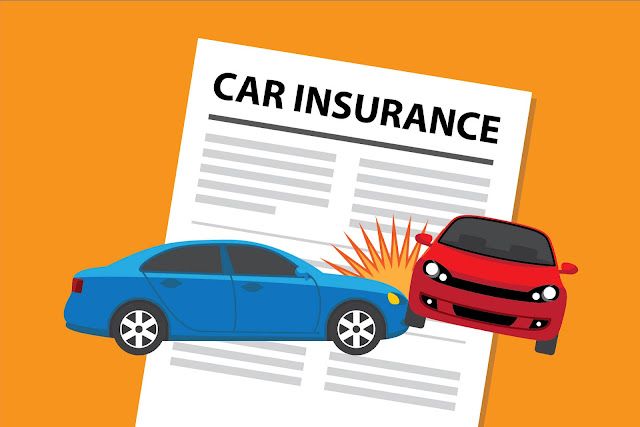Introduction: Why You Need Auto Insurance
Auto insurance is not just a legal requirement in the U.S.; it’s a safety net that helps protect you from financial hardship in the event of an accident. Whether you’re a new driver or have been behind the wheel for years, understanding the best auto insurance options available to you can make a huge difference in your overall financial health. This guide will walk you through what auto insurance is, the different types of coverage, and how to choose the best insurance policy for your needs.

What is Auto Insurance?
Auto insurance is a contract between a car owner and an insurance company. In exchange for a premium, the insurance company provides financial protection against various types of risks that could damage or involve the insured vehicle. Auto insurance policies can be customized with different levels of coverage, depending on what a driver needs and what they are willing to pay.
Types of Auto Insurance Coverage
There are several types of auto insurance coverage available, and understanding each is crucial to choosing the right plan. Here are the most common types:
1. Liability Insurance
Liability insurance covers damages that you cause to other people and their property while driving. In many states, this is the minimum level of coverage required by law. It generally includes two types of coverage: – Bodily Injury Liability: Pays for medical expenses and lost wages for people injured in an accident you caused. – Property Damage Liability: Covers repairs to other people’s property, such as cars, fences, or buildings.
2. Collision Coverage
Collision coverage helps pay for the cost of repairs or replacement if your vehicle is damaged in a collision, regardless of who is at fault.
3. Comprehensive Coverage
Comprehensive coverage protects you against non-collision-related damages, such as those caused by natural disasters, theft, vandalism, or hitting an animal.
4. Uninsured/Underinsured Motorist Coverage
This type of coverage protects you if you’re involved in an accident with a driver who doesn’t have enough insurance or no insurance at all.
5. Personal Injury Protection (PIP)
PIP coverage helps pay for medical expenses for you and your passengers, no matter who caused the accident.
How to Choose the Best Auto Insurance Policy
Choosing the right auto insurance policy involves more than just picking the cheapest option. It’s important to consider factors like your driving habits, the type of car you drive, and your personal financial situation. Here are some tips for selecting the best auto insurance policy for you:
1. Assess Your Coverage Needs
Consider the age and value of your car, as well as how much risk you’re willing to take. If you drive an older car, you might only need liability insurance, while a newer car may warrant collision and comprehensive coverage.
2. Compare Quotes from Multiple Insurers
Insurance premiums can vary widely between companies, so it’s essential to get quotes from multiple insurers. Don’t forget to compare not only prices but also the types of coverage, the company’s reputation, and customer service.
3. Consider Additional Benefits
Some insurance companies offer extra perks, such as roadside assistance or rental car reimbursement, at no additional cost. These extra benefits can be valuable and make a big difference in your overall satisfaction with your insurance policy.
4. Review Your Policy Regularly
Your insurance needs may change over time. Make sure to review your policy annually and after major life changes, like buying a new car or moving to a new state.
Cost of Auto Insurance: What Affects Your Premium?
The cost of auto insurance can vary based on several factors. Here’s what insurers typically consider when determining your premium:
1. Your Driving Record
If you have a history of accidents or traffic violations, your premiums are likely to be higher. On the other hand, a clean driving record can help lower your costs.
2. Your Age and Gender
Young drivers, especially teenagers, typically pay higher premiums. Male drivers often pay more than female drivers due to statistical risk factors.
3. The Type of Vehicle You Drive
Luxury vehicles, sports cars, and cars with high repair costs typically have higher premiums. On the other hand, safer, more economical cars tend to cost less to insure.
4. Your Location
If you live in a densely populated area with a high incidence of accidents or theft, you may pay higher premiums than someone who lives in a rural area.
5. Your Credit Score
In many states, your credit score can affect your auto insurance premium. Drivers with higher credit scores may receive discounts, while those with lower scores may face higher rates.
How to Save on Auto Insurance
If you’re looking to reduce your auto insurance premium, here are some tips:
1. Bundle Policies
If you have homeowners or renters insurance with the same company, you may qualify for a multi-policy discount.
2. Increase Your Deductible
Choosing a higher deductible can lower your premium. However, make sure you can afford the deductible in the event of a claim.
3. Take Advantage of Discounts
Many insurers offer discounts for safe driving, vehicle safety features, good students, or low mileage.
4. Shop Around
Insurance premiums can vary greatly between companies. Make sure to shop around and compare policies before committing to one insurer.
Conclusion
Choosing the best auto insurance policy for your needs can be a daunting task, but it’s crucial for protecting both your vehicle and your financial well-being. By understanding the different types of coverage, considering your personal circumstances, and comparing quotes from multiple insurers, you can find a policy that meets your needs and fits your budget. Don’t forget to review your policy regularly and make adjustments as your circumstances change. With the right auto insurance, you can drive with confidence, knowing that you’re protected in case the unexpected happens.